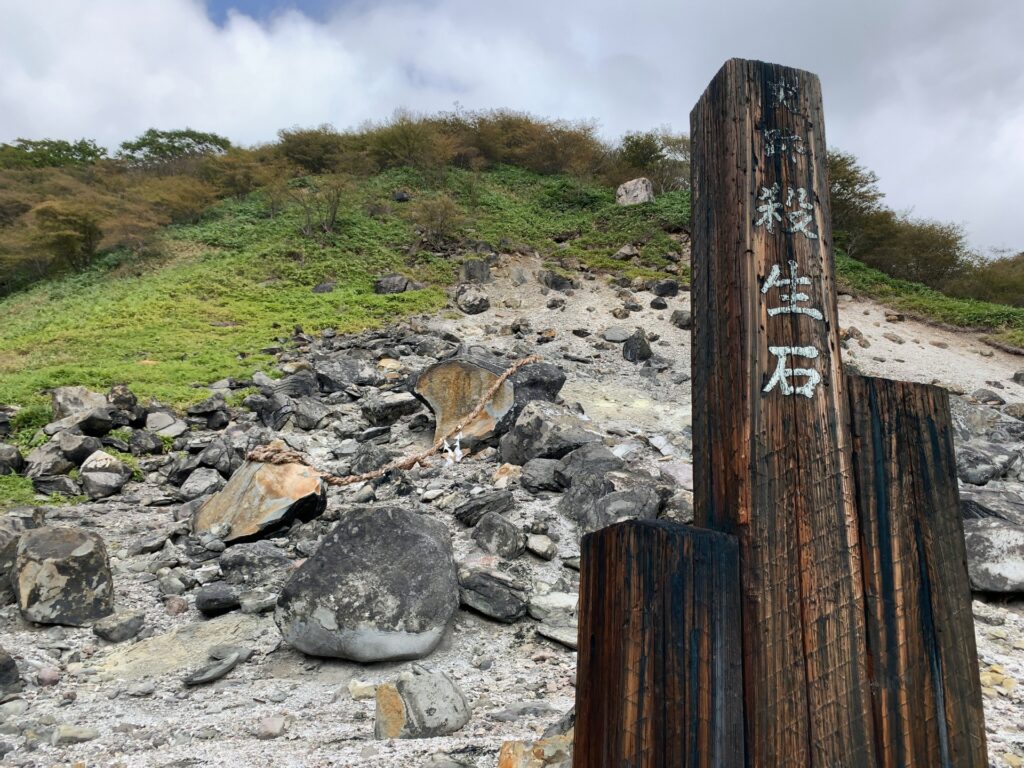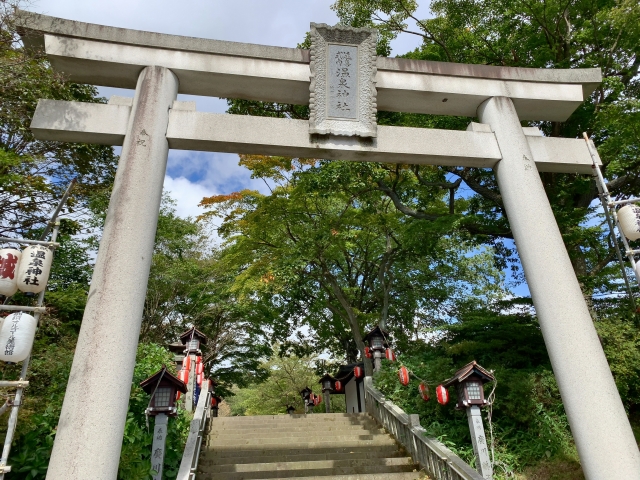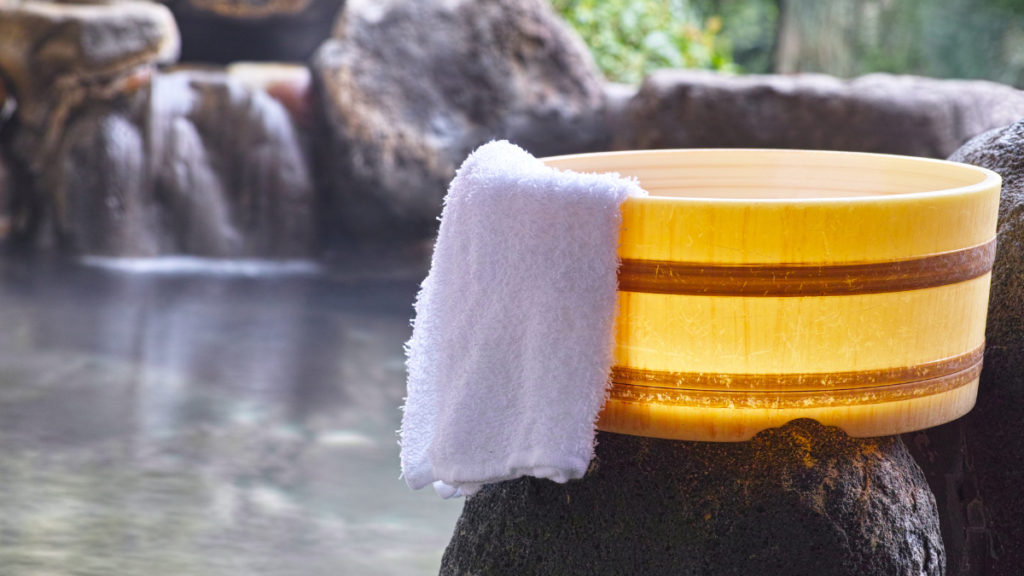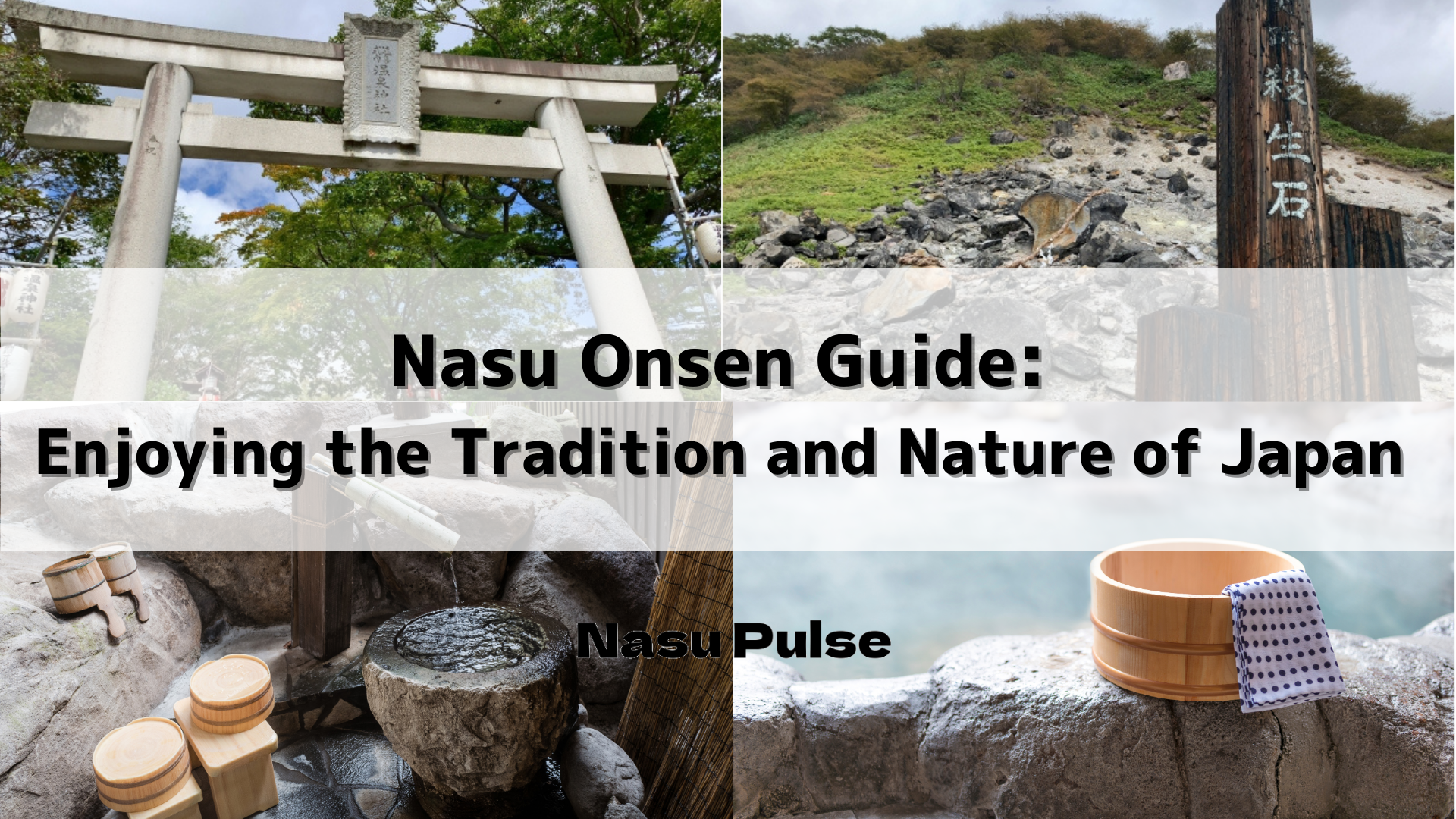If you’re traveling to Japan, be sure to enjoy the hot springs, an important part of Japanese culture.
Nasu is home to many hot springs and is popular as an onsen village.
Exploring the legends and tourist spots related to the hot springs is also a delightful experience.
Please check out our articles to fully enjoy the hot springs in Nasu.
About Nasu Onsen

Nasu Onsen Village is a collective name for eight hot spring areas spread across the slopes of Mount Chausu.
The history of Nasu Onsen is very ancient, beginning in 630 when Saburo Yukihiro Kano discovered ”Shika no Yu”.
Nasu Onsen Village frequently appears in historical records and has been loved throughout the ages.
Each hot spring has different benefits and water qualities, attracting many visitors who enjoy touring the various baths.
The combination of magnificent nature and hot springs, along with its easy access from Tokyo, brings many tourists to Nasu Onsen Village every year.
Here’s the basic information about Nasu Town.
Legends Surrounding the Hot Springs
Sessho-seki

Nasu Onsen Village is rich with legends, the most famous of which is the legend of “Sessho-seki”.
“Sessho-seki,” also known in English as the “Killer Stone,” is said to be the place where Kyubi-no-Kitsune (the nine-tailed fox) was sealed.
According to the legend, the poisonous fumes from this stone withered the surrounding vegetation.
The area is filled with the smell of sulfur, and a thousand Jizo statues stand around, creating a unique atmosphere.
It’s a must-visit spot when you come to Nasu. Combined with the nearby Shika no Yu, it is a popular destination for tourists.
The legend of Kyubi-no-Kitsune (the nine-tailed fox) is a myth passed down in China and Japan, featuring a fox with nine tails that transforms into a beautiful woman.
This fox commits evil deeds and deceives people.
In Japan, the fox transforms into a stunning beauty named Tamamo-no-Mae and brings illness to the emperor during the Heian period.
However, its true identity is revealed, and it is eventually defeated in the Nasu Plain.
Afterward, the fox’s spirit resides in a stone called “Sessho-seki,” which continues to emit poisonous fumes.

| Facility Name: | Sessho-seki |
| Address: | 182 Yumoto, Nasu-machi, Nasu-gun, Tochigi Prefecture |
| Details: | https://www.mlit.go.jp/tagengo-db/en/R2-00679.html |
Nasu Onsen Shrine

Nasu Yuzen Shrine is a historic shrine mentioned in ancient records, with a history based on the legend of the founding of Nasu Onsen.
It is said to have been established in 630 when Saburo Yukihiro Kano discovered Shika no Yu.
The shrine became a central place for hot spring worship in Nasu, attracting many visitors.
Recently, it has gained popularity as a sacred site that brings good fortune to those who visit.
Many tourists from both Japan and abroad come to this shrine seeking its blessings.
Within the shrine grounds, there is a “Sazare-ishi,” which is referenced in the lyrics of Japan’s national anthem, allowing visitors to feel the deep history of Japan.
This shrine, where history and nature blend seamlessly, is an important place to experience the rich history of Nasu Onsen Village.
Nasu Onsen Village is a captivating tourist destination, woven with its rich history, beautiful natural environment, and numerous legends.
Visitors can immerse themselves in the hot springs while reflecting on the history and legends that have endured since ancient times.
| Facility Name: | Nasu Yuzen Shrine |
| Address: | 182 Yumoto, Nasu Town, Nasu District, Tochigi Prefecture |
| Details: | https://nasu-yuzen.jp/ |
Recommended Spots in Nasu Onsen

Shika no Yu: Nasu’s Famous Hot Spring with a 1300-Year History
One of the most famous hot springs in Nasu Onsen Village is “Shika no Yu,” boasting a history of over 1300 years.
Discovered by Saburo Yukihiro Kano in 630, this hot spring has been cherished by many throughout the centuries.
Known for its high-temperature sulfur springs, it is effective for skin diseases and fatigue recovery.
Located near Nasu Yuzen Shrine, visitors can enjoy the atmosphere of this historic hot spring resort.
| Facility Name: | Shika no Yu |
| Address: | 181 Yumoto, Nasu-machi, Nasu-gun, Tochigi Prefecture |
| Details: | http://www.shikanoyu.jp/ |
Omaru Onsen:Recommended After Hiking
Located very close to the base station of the Nasu Ropeway, “Omaru Onsen” is the perfect hot spring to visit after a hike.
Situated at a high altitude of 1300 meters, it is known for its abundant hot spring water.
Omaru Onsen is a must-visit for hot spring enthusiasts.
Nestled even deeper into nature than Shika no Yu, it allows visitors to relax in the hot springs while feeling the richness of the surrounding environment.
The open-air bath “Kawa no Yu” at Omaru Onsen Ryokan is particularly special.
Created by damming the flow of a river, it offers a unique and picturesque hot spring experience.
| Facility Name: | Omaru Onsen |
| Address: | 269 Yumoto, Nasu Town, Nasu District, Tochigi Prefecture |
| Details: | https://www.omaru.co.jp/ |
Yahata Onsen:Enjoy Stunning Azalea Views
“Yahata Onsen” is a popular spot in Nasu Onsen Village for enjoying the stunning views of azaleas.
Every year from May to June, about 100,000 azalea bushes bloom, creating a breathtaking spectacle.
Located at an altitude of 1100 meters, it offers a panoramic view of the Nasu Highland with the Nasu Mountain Range as a backdrop.
During the azalea season, many tourists visit to enjoy both the natural beauty and the hot springs.
| Facility Name: | Yahata Onsen |
| Address: | Yahata Onsen, Yumoto, Nasu Town, Nasu District, Tochigi Prefecture |
| Details: | https://www.nasukogen.org/smt/nasuonsen/onsen6.html |
How to Use the Hot Spring Facilities:Guide to Onsen Etiquette for Foreign Visitors

Japanese onsens are special places where ancient traditions and a culture of healing converge.
To help foreign visitors fully enjoy the wonders of Japanese hot springs, here is a guide on how to properly use an onsen and the etiquette to follow.
Notes on Tattoos
In Japan, the perception of tattoos differs from other countries, and many onsen facilities do not allow individuals with tattoos.
This is because tattoos have historically been associated with criminals and anti-social groups, leading to a negative perception among many people.
If you have tattoos, consider the following options:
- Visit tattoo-friendly facilities: Research and visit onsens that allow tattoos.
- Choose a room with a private bath: Booking a private bath ensures a comfortable and private onsen experience.
- Cover with stickers: Using stickers to cover your tattoos can make it possible to use general onsens.
Rules vary by facility, so it’s best to check online or contact the onsen in advance.
How to Use an Onsen and Etiquette
To use an onsen properly and be considerate of other guests, please follow these guidelines:
- Rinse off before entering the onsen: Always wash your body before getting into the onsen. Rinse off sweat and dirt by pouring water over yourself. This helps keep the onsen clean.
- Tie up long hair: If you have long hair, tie it up before entering the onsen. Keeping hair out of the water is considered good manners.
- Clean the bucket and stool after use:After washing your body, rinse off the bucket and stool with water so the next person can use them comfortably. Also, make sure to put them back in their original place.
- Stay quiet in the bath and changing areas: Onsens are places for relaxation. Avoid talking loudly or making noise.
- Do not bring phones or cameras: To protect privacy, bringing phones or cameras into the bath or changing areas is prohibited.
Enjoying Japanese onsen culture while respecting these rules will ensure a relaxing and refreshing experience.
Onsens are not just for warming your body but also for healing your mind and finding relaxation.
By following proper etiquette, you can fully enjoy the unique experience of Japanese onsens.
Access and Recommended Accommodation in Nasu Onsen Village

Access
Nasu Onsen Village is very convenient to access from Tokyo, making it a popular spot for many tourists. Here are the main ways to get to Nasu Onsen Village:
By Train
- Tohoku Shinkansen: Approximately 75 minutes from Tokyo Station to Nasushiobara Station. From Nasushiobara Station, it takes about 30 minutes by bus or taxi to Nasu Onsen Village.
By Car
- Tohoku Expressway: Approximately 2 hours from Tokyo to Nasu IC. From Nasu IC, it takes about 20 minutes to Nasu Onsen Village.
By Bus
- Express Bus: Express buses run from Shinjuku and Ikebukuro to Nasu Onsen Village, taking about 3 hours.
Recommended Accommodation
Nasu Onsen Village offers a variety of accommodations to meet the needs of its visitors.
Here are some recommended places to stay:
Nasu Yumoto Onsen “Shika no Yu Hotel”
Shika no Yu Hotel is an onsen ryokan adjacent to the historic “Shika no Yu,” which boasts a history of over 1300 years.
The facility combines traditional Japanese ambiance with modern comfort, providing a relaxing experience.
Guests can enjoy both indoor and outdoor baths and fully benefit from the hot spring’s healing properties.
Omaru Onsen Ryokan
Omaru Onsen Ryokan is situated at a high altitude of 1300 meters, surrounded by magnificent nature.
The outdoor bath “Kawa no Yu,” created by damming the flow of a river, offers a unique and picturesque hot spring experience. It is the perfect spot to visit after a hike.
Yawata Onsen “Yawata Hotel”
Yawata Hotel offers stunning views of the Nasu Mountain Range.
Especially in spring, visitors can enjoy the breathtaking sight of azaleas in full bloom.
The hotel provides simple yet comfortable accommodations, ensuring a relaxing stay in a tranquil environment.
Nasu Onsen Village has many other attractive accommodations, each with its own unique charm.
Enjoy your stay in Nasu Onsen Village by exploring the various facilities and their offerings.
PTBNasuMachi
PTBNasuMachi is located in the central part of Nasu Town, making it very convenient to access various tourist attractions.
It is just a 10-minute drive from Nasu Onsen Village, making it an ideal location to enjoy the hot springs.
The cottage can be rented out by families or groups, allowing for a private and relaxing stay.
Recently renovated, it features the latest amenities to ensure a comfortable stay.
Please consider PTBNasuMachi as your base to fully enjoy the nature and sights of Nasu.
Summary
The history of Nasu’s hot springs is ancient, with “Shika no Yu” having been loved by many people for over 1300 years since its discovery in 630.
Despite being only two hours from Tokyo, Nasu is a place rich in nature where you can relax both physically and mentally.
If you want to forget the busyness of life and rest your body, please enjoy the hot springs in Nasu Onsen Village and rejuvenate your spirit.




